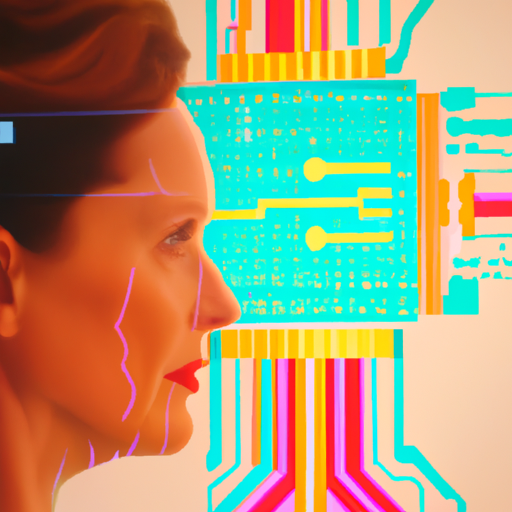-
Table of Contents
Futuristic Graphics: Merging Tech and Art in Design
Technology has always played a significant role in shaping the world of art and design. From the invention of the printing press to the rise of digital art, each technological advancement has opened up new possibilities for creative expression. In recent years, the fusion of technology and art has given birth to a new trend known as futuristic graphics. This article explores the concept of futuristic graphics, its impact on design, and the exciting possibilities it holds for the future.
What are Futuristic Graphics?
Futuristic graphics refer to a style of design that combines elements of technology, science fiction, and imagination to create visually stunning and forward-thinking artwork. This style often incorporates futuristic themes such as space exploration, artificial intelligence, and advanced technology. Futuristic graphics can be found in various forms, including digital illustrations, motion graphics, and even virtual reality experiences.
The Impact of Futuristic Graphics on Design
The emergence of futuristic graphics has had a profound impact on the design industry. Here are some key ways in which this trend has influenced the field:
- Inspiring Innovation: Futuristic graphics push the boundaries of what is possible, inspiring designers to think outside the box and explore new ideas. By envisioning a future that is yet to come, these designs encourage innovation and creativity.
- Creating Immersive Experiences: Futuristic graphics have the power to transport viewers into a different world. Whether it’s through virtual reality or interactive installations, these designs create immersive experiences that captivate and engage audiences.
- Enhancing User Interfaces: The principles of futuristic graphics have also found their way into user interface design. From sleek and minimalistic interfaces to futuristic animations, these elements enhance the user experience and make technology more accessible and enjoyable.
- Attracting Attention: Futuristic graphics are visually striking and attention-grabbing. In a world saturated with information, these designs help brands and businesses stand out from the crowd and leave a lasting impression on their audience.
Case Studies: Futuristic Graphics in Action
Let’s take a closer look at some real-world examples of how futuristic graphics have been applied in different industries:
1. Film and Entertainment
The film industry has long embraced futuristic graphics to create visually stunning and immersive experiences. One notable example is the movie “Blade Runner 2049,” directed by Denis Villeneuve. The film’s visual effects, created by Double Negative, seamlessly blended futuristic elements with a dystopian setting, resulting in a visually breathtaking experience for the audience.
2. Gaming
Futuristic graphics have also found a natural home in the gaming industry. The video game “Deus Ex: Mankind Divided” developed by Eidos Montreal is a prime example. The game’s futuristic setting, combined with its stunning graphics, transports players into a world filled with advanced technology and cybernetic enhancements.
3. Advertising and Branding
Brands are increasingly incorporating futuristic graphics into their advertising and branding campaigns to create a sense of innovation and forward-thinking. One notable example is the Nike “Unlimited You” campaign, which featured futuristic graphics and animations to showcase the limitless potential of athletes.
The Future of Futuristic Graphics
The future of futuristic graphics is filled with exciting possibilities. As technology continues to advance, designers will have access to even more tools and techniques to create immersive and visually stunning experiences. Here are some trends to watch out for:
- Virtual Reality: Virtual reality is poised to revolutionize the way we experience art and design. With the ability to create fully immersive environments, designers can transport viewers into fantastical worlds and push the boundaries of their imagination.
- Augmented Reality: Augmented reality blends the real world with digital elements, opening up new avenues for futuristic graphics. From interactive advertisements to virtual try-on experiences, AR has the potential to transform how brands engage with their audience.
- Artificial Intelligence: As AI continues to evolve, it will play a more significant role in the creation of futuristic graphics. AI-powered tools can assist designers in generating complex visuals and animations, freeing up their time to focus on the creative aspects of their work.
- Responsive Design: With the rise of wearable technology and flexible displays, responsive design will become increasingly important in futuristic graphics. Designs that adapt to different screen sizes and form factors will ensure a consistent and engaging experience across various devices.
Summary
Futuristic graphics represent the convergence of technology and art in design. This style pushes the boundaries of creativity, inspiring innovation and creating immersive experiences. From film and gaming to advertising and branding, futuristic graphics have made a significant impact across various industries. As technology continues to advance, the future of futuristic graphics holds even more exciting possibilities, including virtual reality, augmented reality, artificial intelligence, and responsive design. By embracing these trends, designers can continue to create visually stunning and forward-thinking artwork that captivates and engages audiences.
